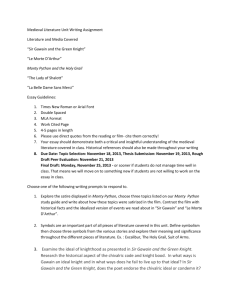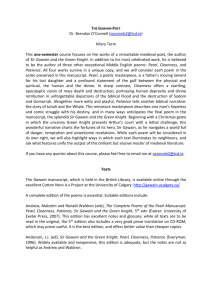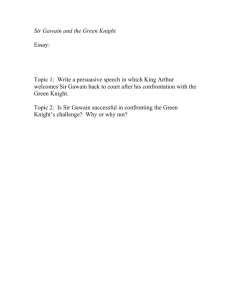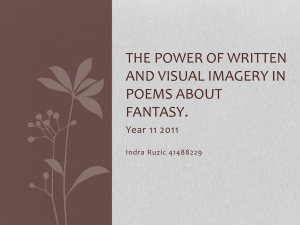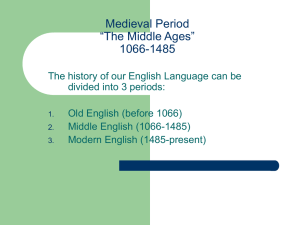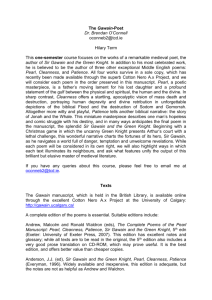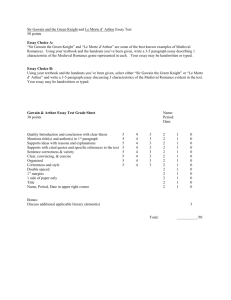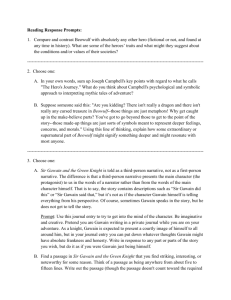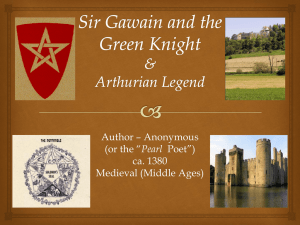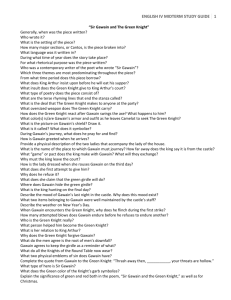Sir Gawain and the Green Knight
advertisement
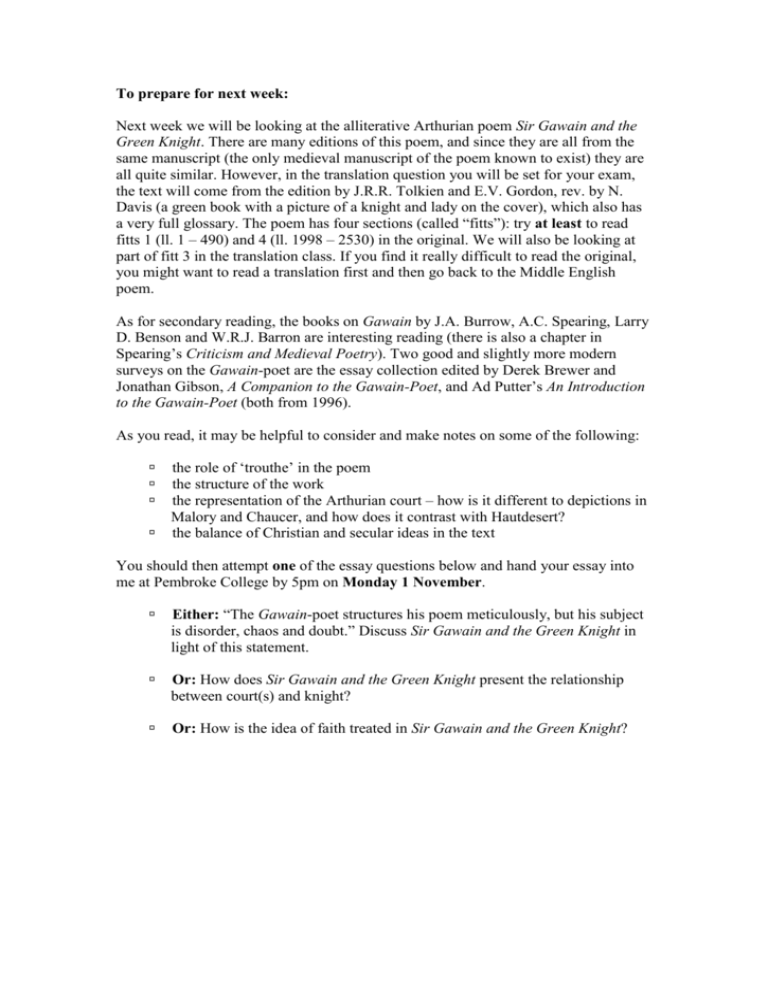
To prepare for next week: Next week we will be looking at the alliterative Arthurian poem Sir Gawain and the Green Knight. There are many editions of this poem, and since they are all from the same manuscript (the only medieval manuscript of the poem known to exist) they are all quite similar. However, in the translation question you will be set for your exam, the text will come from the edition by J.R.R. Tolkien and E.V. Gordon, rev. by N. Davis (a green book with a picture of a knight and lady on the cover), which also has a very full glossary. The poem has four sections (called “fitts”): try at least to read fitts 1 (ll. 1 – 490) and 4 (ll. 1998 – 2530) in the original. We will also be looking at part of fitt 3 in the translation class. If you find it really difficult to read the original, you might want to read a translation first and then go back to the Middle English poem. As for secondary reading, the books on Gawain by J.A. Burrow, A.C. Spearing, Larry D. Benson and W.R.J. Barron are interesting reading (there is also a chapter in Spearing’s Criticism and Medieval Poetry). Two good and slightly more modern surveys on the Gawain-poet are the essay collection edited by Derek Brewer and Jonathan Gibson, A Companion to the Gawain-Poet, and Ad Putter’s An Introduction to the Gawain-Poet (both from 1996). As you read, it may be helpful to consider and make notes on some of the following: the role of ‘trouthe’ in the poem the structure of the work the representation of the Arthurian court – how is it different to depictions in Malory and Chaucer, and how does it contrast with Hautdesert? the balance of Christian and secular ideas in the text You should then attempt one of the essay questions below and hand your essay into me at Pembroke College by 5pm on Monday 1 November. Either: “The Gawain-poet structures his poem meticulously, but his subject is disorder, chaos and doubt.” Discuss Sir Gawain and the Green Knight in light of this statement. Or: How does Sir Gawain and the Green Knight present the relationship between court(s) and knight? Or: How is the idea of faith treated in Sir Gawain and the Green Knight?

